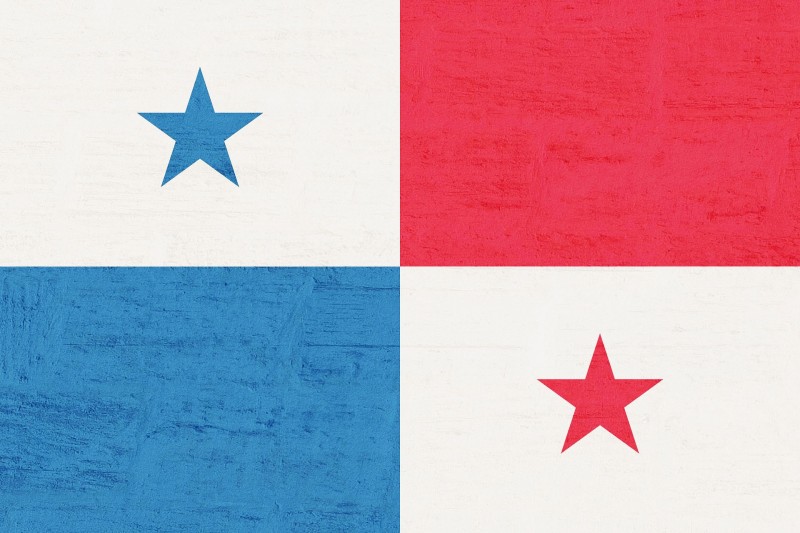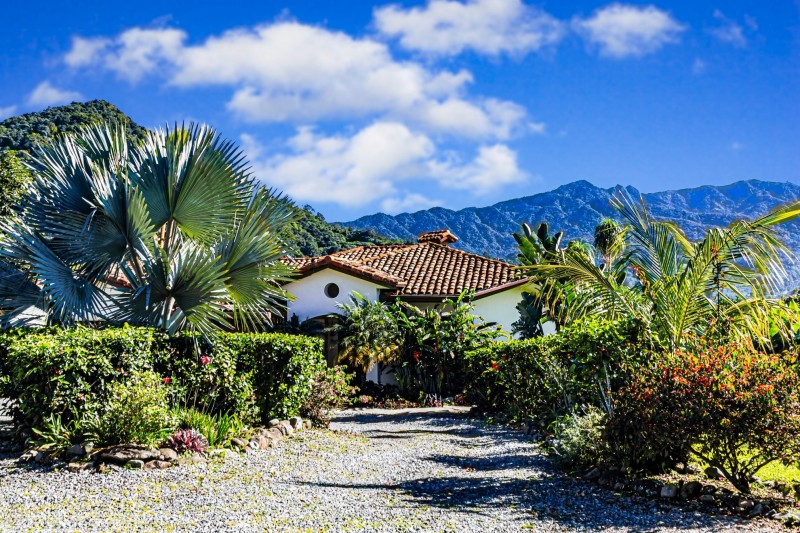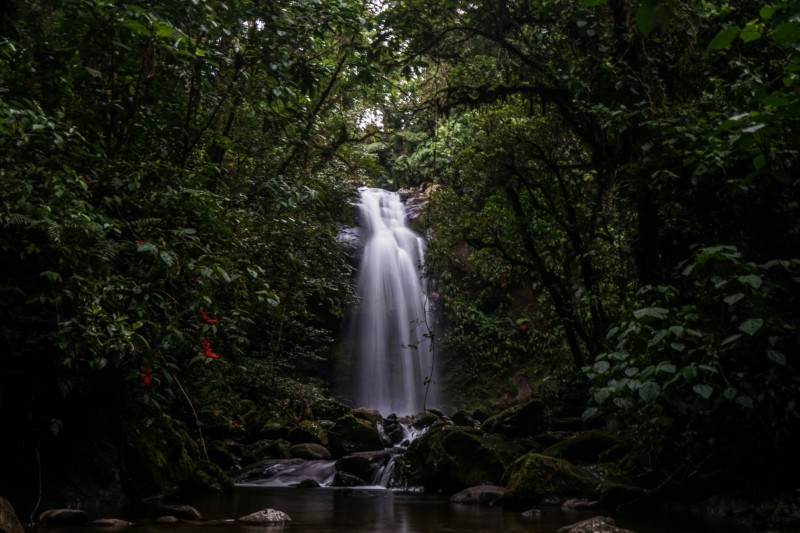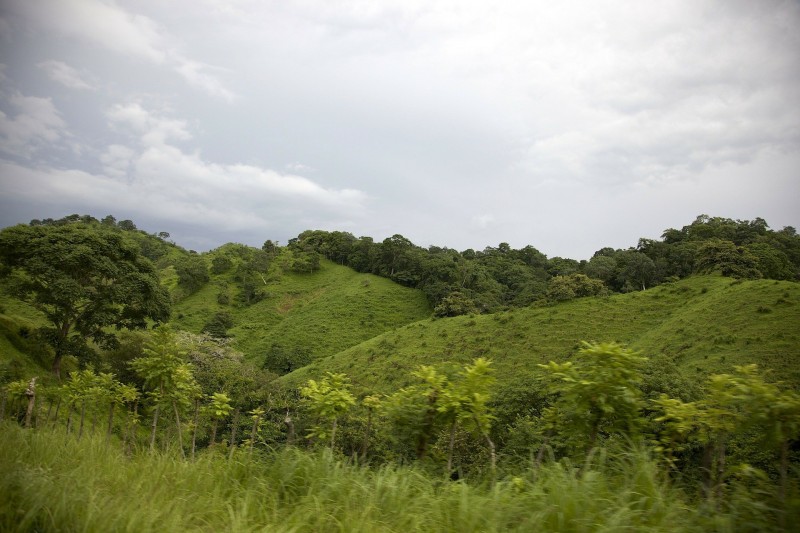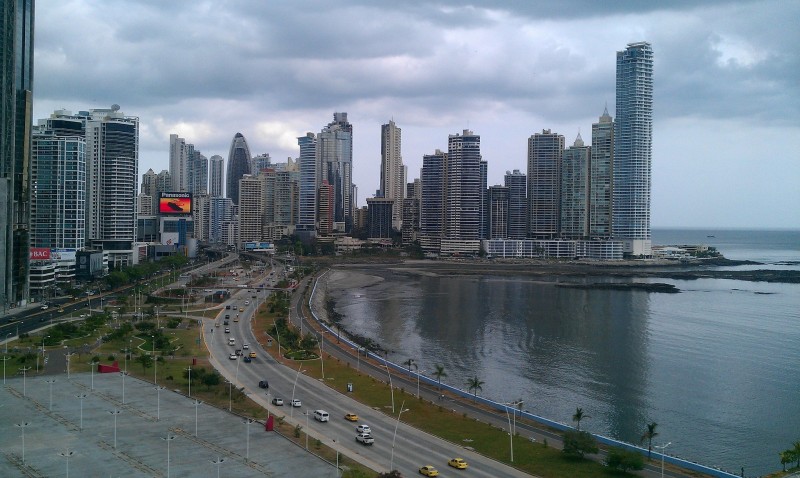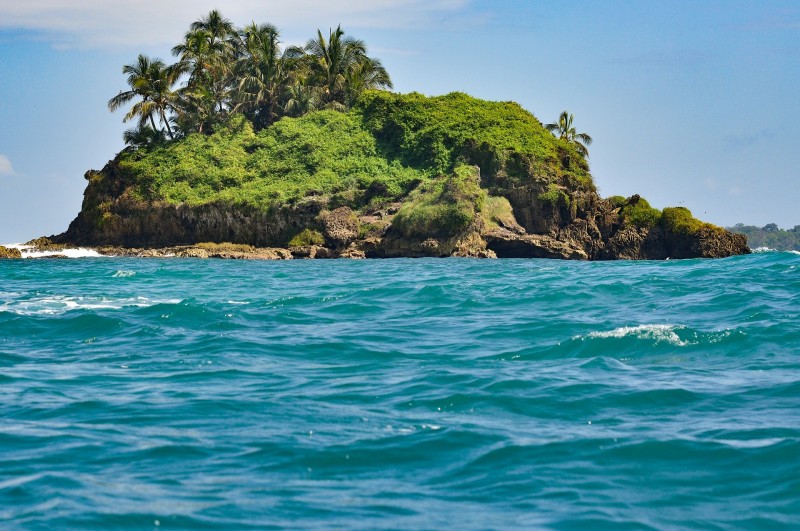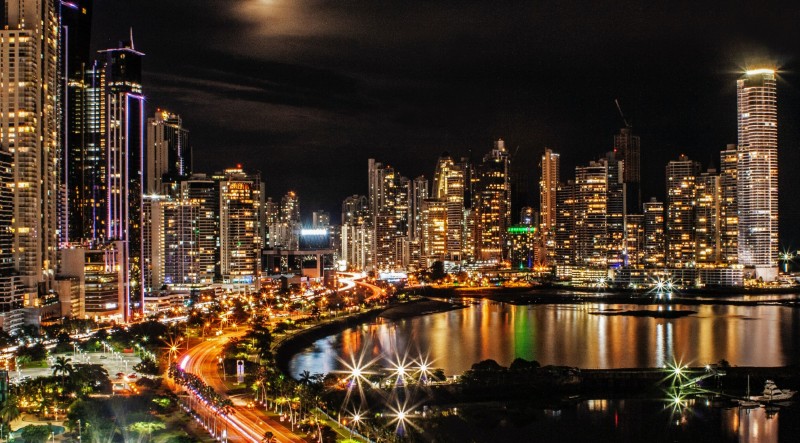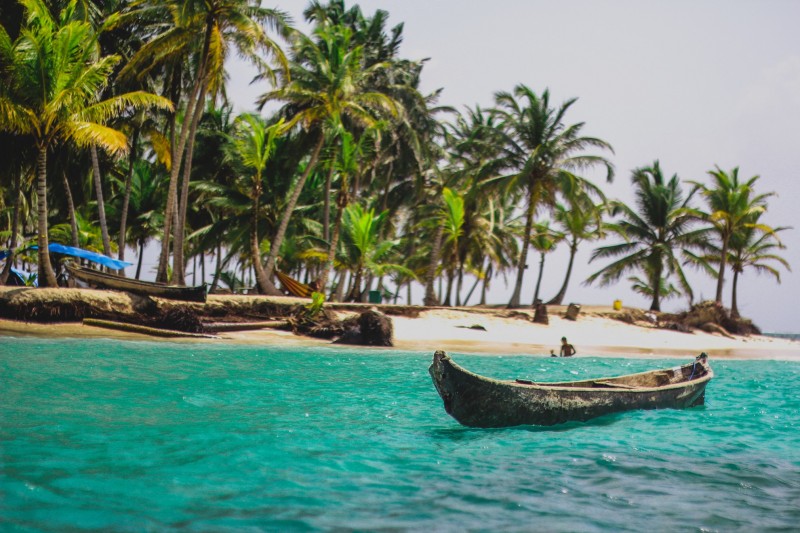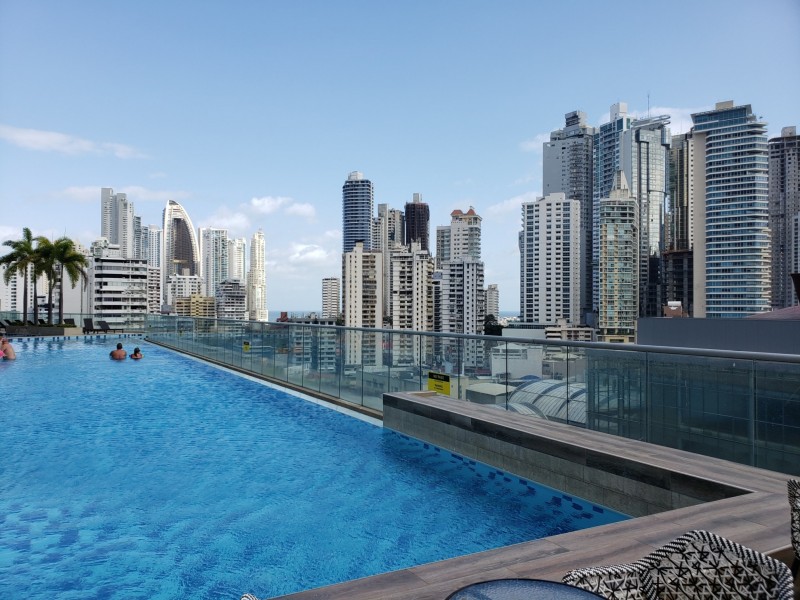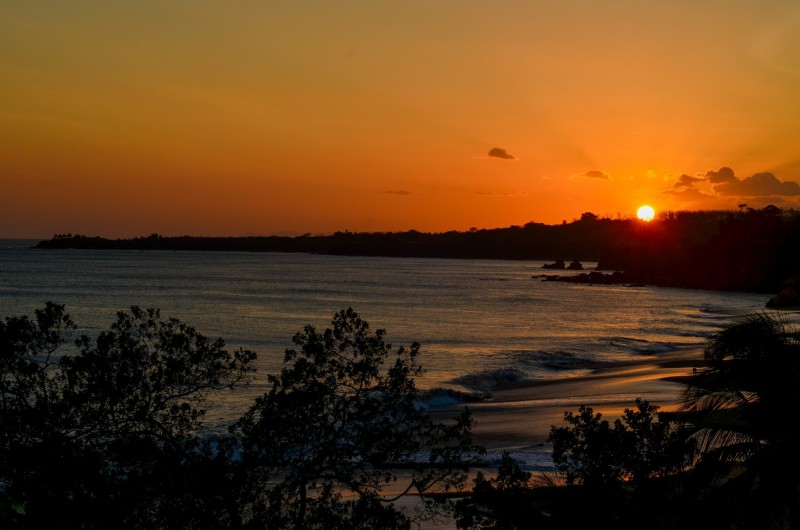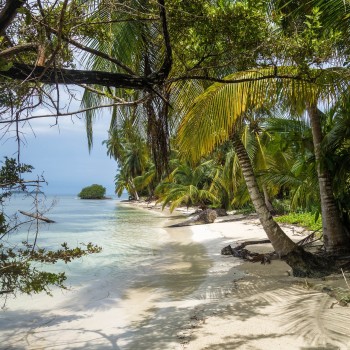Panama
Panama
Capital city description
Panama City is Central America's most cosmopolitan capital, a thriving center of international finance, a gateway to many natural riches, and a vibrant destination marked by fine dining, chic clubs, shimmering glass towers, stylish neighborhoods, and a charming colonial district. Its cultural and architectural diversity is nearly unparalleled in the region, making the city a true Latin playground.
There are many museums in the city, and one of the most impressive is the Museo del Canal Interoceánico, known commonly as the Panama Canal Museum. The detailed exhibits highlight the famous waterway and explain its political and historical context. The labels are in Spanish, but English-speaking guides are available for tours.
The murals around the Panama Canal Administration Building give more insight into the storied waterway's history. The four large murals depict the canal's construction, from the digging of Gaillard Cut to the installation of the Miraflores Locks.
The Centro de Exhibiciones Marinas is also worth a visit. The informative marine museum is home to two aquariums, sweeping views of the city's coast, and a nature trail that takes visitors through a patch of dry forest. While strolling, visitors can usually spy on at least a few iguanas and sloths. Outside the museum, large drawings of ships allow visitors to identify the vessels waiting to transit the canal.
To get a feel for rural Panama without ever leaving the city, visit the Mi Pueblito museum on the town's western side. The open-air museum features detailed replicas of rural villages in Darien, the Peninsula de Azuero, and Bocas del Toro. Local artisans sell handicrafts at the adjacent shops, and folk dances are performed every weekend.
At the Museo de Arte Religioso Colonial, visitors can feast their eyes on an extensive collection of religious artifacts, some of which are more than 500 years old. Housed next to the ruins of the Santo Domingo Church, the museum is a must-see for anyone interested in art or the region's religious heritage.
Other museums worth exploring include the captivating Museo de Historia Panamá. The Museo Antropológico Reina Torres de Araúz, which contains a great collection of pre-Colombian artifacts, and the Museo de Sitio Panamá Viejo, which is home to an interesting and detailed scale model of the city during the mid-17th century.
Panama City is known for its many distinct neighborhoods, and the Casco Viejo district is one of the most charming and interesting. The "old city" is a UNESCO World Heritage Site marked by cobbled streets, colonial buildings, fascinating ruins, and beautiful harbor views.
The capital is a very green city, thanks largely to the Parque Natural Metropolitano. The 265-hectare tropical semi-deciduous forest is a wilderness escape from the urban chaos of the capital, and it features panoramic views, hiking trails, and a wide array of wildlife. Visitors can spot over 250 bird species, anteaters, white-tailed deer, titi monkeys, iguanas, tortoises, and turtles while hiking, jogging, and picnicking in the park.
The Calzada causeway offers more opportunities to get away from the hustle and bustle of the city. The two-kilometer causeway connects the mainland to four small islands, and residents head there in the early mornings and afternoons to skate, jog, walk and enjoy sweeping views of the old city and the skyline. The restaurants and bars that line the causeway are some of the city's best, and the refreshing ocean breezes make them more relaxed than most.
Climate
Mid-December - mid- April ( dry season )
October- November ( wettest season)
Mid-April - mid- December ( wet season)
Panama has a tropical climate with high temperatures throughout the year. There are two seasons in most of the
country: a dry season with little rainfall from mid-December to mid-April and a wet season from mid-April to mid-
December. October and November are usually the wettest months.
Languages spoken
The Official Language Of Panama Spanish in Panama is the first language for about 4 million inhabitants.
Fun/Fascinating Facts
1. You can watch the sunrise in the Pacific and set in the Atlantic
Panama is the only country where you can watch the sunrise on the Pacific coast and then set on the Atlantic coast. You can see this from the top of the highest point in the country, Volcan Baru, at 3,474 m. However, to see sunrise and sunset on the same day does mean waiting around for 12 hours!
2. The narrowest part of Panama is only 30 miles wide
The narrowest part of Panama is only 30 miles (48 kilometers) wide, so it’s effortless traveling from one side to the other. You can even do it multiple times a day if you want. It is pretty cool visiting both sides in a day, though.
3. Panama City has its rain forest within the city limits
Panama City is the only capital city in the world with a rain forest within the city limits. It’s one of the reasons it’s such a humid city to visit. I can’t tell you how much I sweated while I was there!
4. Panama has two independence days
Panama celebrates two independence days, the first from Spain in 1821 and Colombia 82 years later in 1903. Fiesta time!
5.There are a vast number of birds in Panama
Panama has more than 976 bird species, which is more than the United States and Canada combined.
Panama City is the only capital city in the world that has a rain forest within the city limits. It’s one of the reasons it’s such a humid city to visit. I can’t tell you how much I sweated while I was there!
Unique Customs/Traditions
- Like much of Latin America, Panama is socially conservative, with a vast majority of the population reported being Roman Catholic. Thanks to the country's history, more religions are present than in other parts of the region. Still, the combination of a predominantly Catholic cultural identity marked economic stratification, and other ingrained colonial legacies have produced a country and people who appreciate rules and accept established social castes. The history of a US presence, widespread access to global media and entertainment, and relatively diverse demographics, as well as recent economic expansion, have all contributed to making Panama a country familiar with change.
- Macho attitudes, however, do prevail. For women traveling in Panama, unsolicited attention in the form of whistles and catcalls is almost inevitable, though easily ignored. Overall, Panama's the Caribbean, and indigenous areas hold less macho and more relaxed attitudes, though revealing clothing is not tolerated (except on the beach). Though attitudes toward homosexuality are gradually softening – it was decriminalized in 2008 – and extensive same-sex relationships are kept under wraps.
- Tipping is only expected in more expensive places, where a tip is sometimes included in the final bill or where service has been excellent. It's not usual to haggle in shops, but prices are more negotiable in markets, especially if you're buying a lot, and you'll often need to bargain when organizing transport by boat or pick-up truck.
Popular universities
| Name | Description | |
|---|---|---|
| Universidad de Panamá (University of Panamá) | Universidad de Panamá (University of Panamá), founded in 1935, is a non-profit public higher education institution located in the large city of Panama City (population range of 500,000-1,000,000 inhabitants), Panama. Officially recognized by the Consejo Nacional de Evaluacion y Acreditacion Universitaria de Panama (National Council of University Assessment and Accreditation of Panama), Universidad de Panamá (UP) is a coeducational Panamanian higher education institution. Universidad de Panamá (UP) Offers courses and programs leading to officially recognized higher education degrees such as bachelor's 's degrees in several areas of study. | |
| Universidad de Panamá (University of Panamá) | Universidad de Panamá (University of Panamá), founded in 1935, is a non-profit public higher education institution located in the large city of Panama City (population range of 500,000-1,000,000 inhabitants), Panama. Officially recognized by the Consejo Nacional de Evaluacion y Acreditacion Universitaria de Panama (National Council of University Assessment and Accreditation of Panama), Universidad de Panamá (UP) is a coeducational Panamanian higher education institution. Universidad de Panamá (UP) offers courses and programs leading to officially recognized higher education degrees such as bachelor's degrees in several areas of study. | |
| Florida State University Panama | Founded in 1982, Florida State University Panama City is a non-profit private higher education institution located in the urban setting of the large city of Panama City (population range of 500,000-1,000,000 inhabitants), Panama. Officially recognized by the Southern Association of Colleges and Schools Commission on Colleges, Florida State University Panama City (FSU Panama) is a small (uniRank enrollment range: 250-499 students) coeducational Panamanian higher education institution. Florida State University Panama City (FSU Panama) offers courses and programs leading to officially recognized higher education degrees such as pre-bachelor degrees (i.e., certificates, diplomas, associate or foundation), bachelor degrees in several areas of study. | |
| Universidad Latina de Panamá (Latina University of Panamá) | Universidad Latina de Panamá (Latina University of Panamá), established in 1989, is a non-profit private higher education institution located in the urban setting of the large city of Panama City (population range of 500,000-1,000,000 inhabitants), Panama. Officially recognized by the Consejo Nacional de Evaluacion y Acreditacion Universitaria de Panama (National Council of University Assessment and Accreditation of Panama), Universidad Latina de Panamá (ULATINA) is a medium-sized (uniRank enrollment range: 8,000-8,999 students) coeducational Panamanian higher education institution. Universidad Latina de Panamá (ULATINA) offers courses and programs leading to officially recognized higher education degrees such as pre-bachelor degrees (i.e., certificates, diplomas, associate or foundation), bachelor's degrees, master degrees, doctorate degrees in several areas of study. This institution also has branch campuses in the following locations: Santiago, Azuero, David, Penonomé. | |
| . Universidad Católica Santa María La Antigua (Santa María La Antigua Catholic University) | Universidad Católica Santa María La Antigua (Santa María La Antigua Catholic University), established in 1965, is a non-profit private higher education institution located in the urban setting of Panama City (population range of 500,000-1,000,000 inhabitants), Panama. It was officially recognized by the Consejo Nacional de Evaluacion y Acreditacion Universitaria de Panama (National Council of University Assessment and Accreditation of Panama). Universidad Católica Santa María La Antigua (USMA) is a small (uniRank enrollment range: 4,000-4,999 students) coeducational Panamanian higher education institution formally affiliated Christian-Catholic religion. Universidad Católica Santa María La Antigua (USMA) offers courses and programs leading to officially recognized higher education degrees such as pre-bachelor degrees (i.e., certificates, diplomas, associate or foundation), bachelor's degrees, master degrees, doctorate degrees in several areas of study. This institution also has branch campuses in the following locations: Chiriquí, Azuero, Colón, Santiago. | |
| Universidad Metropolitana de Educacion, Ciencia y Tecnologia (Metropolitan University of Education, Science and Technology) | Founded in 2002, Universidad Metropolitana de Educacion, Ciencia y Tecnologia (Metropolitan University of Education, Science, and Technology) is a higher education institution located in the large city of Panama City (population range of 500,000-1,000,000 inhabitants), Panama. Officially recognized by the Consejo Nacional de Evaluacion y Acreditacion Universitaria de Panama (National Council of University Assessment and Accreditation of Panama), Universidad Metropolitana de Educacion, Ciencia y Tecnologia (UMECIT) is a coeducational Panamanian higher education institution. Universidad Metropolitana de Educacion, Ciencia y Tecnologia (UMECIT) offers courses and programs leading to officially recognized higher education degrees such as bachelor's degrees in several areas of study. | |
| Universidad Interamericana de Panamá (Interamerican University of Panamá) | Established in 1994, Universidad Interamericana de Panamá (Interamerican University of Panamá) is a higher education institution located in the large city of Panama City (population range of 500,000-1,000,000 inhabitants) Panama. Officially recognized by the Consejo Nacional de Evaluacion y Acreditacion Universitaria de Panama (National Council of University Assessment and Accreditation of Panama), Universidad Interamericana de Panamá (UIP) is a coeducational Panamanian higher education institution. Universidad Interamericana de Panamá (UIP) offers courses and programs leading to officially recognized higher education degrees in several areas of study. | |
| ISAE Universidad (ISAE University) | Universidad Interamericana de Panamá (Interamerican University of Panamá), established in 1994, is a higher education Established in 1994, ISAE Universidad (ISAE University) is a higher education institution located in the large city of Panama City (population range of 500,000-1,000,000 inhabitants), Panama. Officially recognized by the Consejo Nacional de Evaluacion y Acreditacion Universitaria de Panama (National Council of University Assessment and Accreditation of Panama), ISAE Universidad is a coeducational Panamanian higher education institution. ISAE Universidad offers courses and programs leading to officially recognized higher education degrees in several areas of study. | |
| .Universidad Especializada de Las Americas (Specialized University of the Americas) | Universidad Especializada de Las Americas (Specialized University of the Americas), founded in 1997, is a non-profit public higher education institution located in the large city of Panama City (population range of 500,000-1,000,000 inhabitants) Panama. Officially recognized by the Consejo Nacional de Evaluacion y Acreditacion Universitaria de Panama (National Council of University Assessment and Accreditation of Panama), Universidad Especializada de Las Americas (UDELAS) is a coeducational Panamanian higher education institution. Universidad Especializada de Las Americas (UDELAS) offers courses and programs leading to officially recognized higher education degrees such as bachelor's degrees in several areas of study. Courses and programs leading to officially recognized higher education degrees such as bachelor's degrees in several areas of study. Courses and programs leading to officially recognized higher education degrees such as bachelor's degrees in several areas of study. | |
Festivals & Events
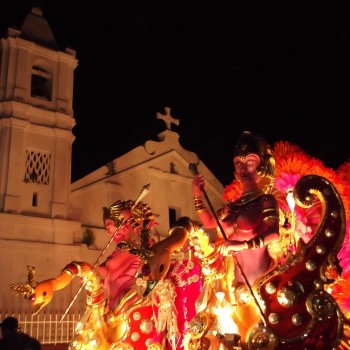
Carnaval de Las Tablas
Date: March
One of Panama's most popular cultural events, this colorful and lively celebration occurs every year during the four days preceding Ash Wednesday in March. First held in the 19th century, this annual tradition began as a rivalry between two Las Tablas' religious groups, the Calle Arriba and Calle Abajo. Both wrote songs and performed dances to antagonize the other in the four days preceding the Catholic observation of Lent. Traditional folk songs and dances are performed during the celebration in memory of this historic event's earliest days. Most towns and cities across Panama have their versions of Carnaval, and people come from across the world to enjoy the colorful parades that define this iconic celebration.
Throughout Carnaval, families take the opportunity to indulge in food and drink on the country's beaches and spend time with one another. During the nighttime festivities, two groups line the city streets to represent members of the original feud. It is common for members of the opposite sex to douse one another with water as a sign of provocation (though today, it's generally made in a lighthearted manner). Two "queens" are chosen to compete for the title of the overall reigning queen. Performers wearing elaborate costumes engage in traditional dances on flamboyant floats during these parades, which have come to symbolize the event.
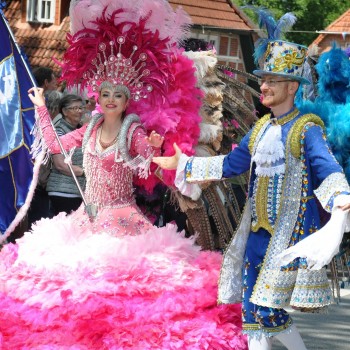
Festival de la Mejorana en Guararé
Date: September
Panama has a rich folkloric history. These myths and tales are celebrated in Guararé, located in the province of Los Santos on the Azuero Peninsula. This annual festival de la Mejoranais held in September each year and honors the Virgin of Mercy (la Virgen de las Mercedes), who was said to have performed a miracle for a local’s daughter in 1949. In exchange, he promised an annual festival in her honor.
Today, performers come from around the country to dance, sing, eat and enjoy. Fireworks and decorations transform this small town for the week-long festivities, and today, the festival de la Majorana is the largest and most important folklore event in the country.
As with many other Panamanian celebrations, music and dancing are central to the Majorana festival, but bullfights and oxcart parades are also very important. This event is not to be missed
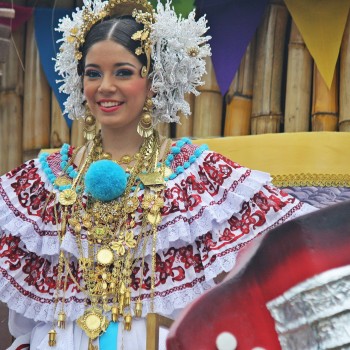
Fiestas Patrias
Date: November
Arguably one of the most important cultural events on the Panama Calendar, Fiestas Patrias celebrates the country’s separation from Colombia in 1903 as well as the nation’s Flag Day, making it a particularly patriotic event. This annual festival takes place in Panama City, so it’s a must-see for visitors spending time in the Panamanian capital.
Celebrated in November, the festival recognizes the Panamanian flag, as it was designed and first created when the country declared its formal independence. For this reason, Panama has not one but two independence days, making the Fiestas Patrias a significant celebration.
Quintessential Panamanian culture is on full display during this event. A large parade is often led by a female dancer dressed in traditional Panamanian clothes, such as the cherished ¨pollera¨ (the dress females wear as seen in the photo above). Schoolchildren from across the country travel to the capital for the honor of performing in the procession’s marching bands, and the country is united in celebration not only of the nation’s independence but also of what it means to be Panamanian.
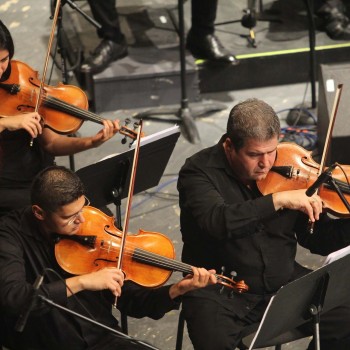
Panama Jazz Festival
Date: January 13-18
With such a diverse cultural blend and rich history, it’s little wonder that music is such an essential part of Panama’s culture. It is particularly evident during the annual Panama Jazz Festival, the next of which will occur across various venues in Panama from Jan. 13 through 18 in 2014.
One of the most influential jazz festivals globally, this event attracts musical talent from across the globe, and next year’s festival promises to be one of the biggest and best yet. More than 400 performers have been confirmed, including Herbie Hancock and national icon Rubén Blades. In addition to being the premier destination for jazz enthusiasts visiting Panama, this festival also aims to raise awareness of social issues faced in Panama and across Central and South America.
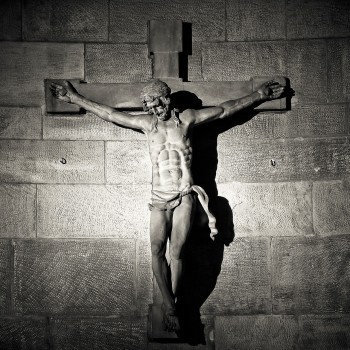
Festival de Cristo Negro de Portobelo
Date: October 21th
Spirituality is a vital part of many Panamanians' lives, and Catholicism is the country's primary religion. For these reasons, the Festival del Cristo Negro de Portobelo, or Festival of the Black Christ of Portobelo, is an important event on Oct. 21 each year.
The primary destination for many people who make the annual pilgrimage during the festival is the Church of San Felipe, where the statue of the Black Christ sits to the left of a magnificent golden altar. This impressive dais features detailed carvings of Christ's journey to Golgotha, where He was crucified. Many pilgrims making way to the Church of San Felipe do on their knees out of respect for their Lord. Some wear purple robes as a symbol of penance for their misdeeds.
At 6 p.m., a special mass is called, and two hours later, 80 men carry the statue of the Black Christ around the town of Portobelo. This procession can last for around four hours, during which music is performed, making the event feel like a parade. At the stroke of midnight, the statue is returned to its home alongside the Golden Altar in the Church of San Felipe.
The festival was first celebrated in the late 17th century. The mysterious arrival of an image of the Nazarene is at the heart of this celebration, and there are several theories on how this artifact came to arrive in Panama. One of the most enduring tales is that a cargo ship could not leave port during a, particularly violent storm despite several attempts. When the vessel tried to set sail for the fifth time, the crew decided to lighten the ship's load by casting a box overboard. The crate was found to contain the image of the Nazarene, transferred to the church in Portobelo.
.jpg)
Feria Internacional de Azuero
Date: April 20 to May 1
Recognized locally as "the last in the long list of fairs that take place throughout Panama during the dry season," the Azuero International Fair will take place from April 20 to May 1. This fair, which has been held in the town of Los Santos since 1944, attracts visitors from all over the country. It's considered one of the most significant tourist attractions in the region.
Under the slogan "Azuero, an independent region," the International Fair of Azuero in its Fifty-fifth edition will take place in an area of 18 hectares. Over the years, this event has received more than 300,000 people. This edition is expected to receive more than 400,000 visitors, making it the best opportunity to learn about Azuero's agricultural, livestock, and industrial wealth and enjoy food, music, and folkloric performances, among other activities that continue to attract more people each year. In addition, this event is famous for its traditional parades on the main road in Villa de Los Santos.
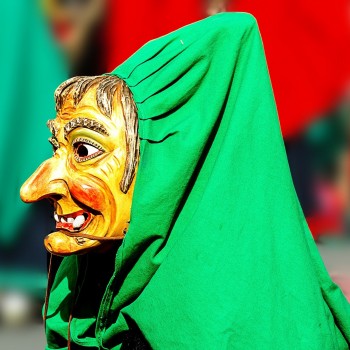
Carnaval
Date: February
Public celebrations mark the days before the somber Christian season of Lent in many countries. Each culture puts its spin on carnival season. Carnaval in Panama takes place over the four days preceding Ash Wednesday. The start of Lent and features street dancing, music, parades, exotically decorated floats, elaborately dressed queens, and long hours partying. It’s colorful, lively, and loud.
Carnaval takes over the country. Although it is not an official holiday, many businesses shut down for the period. There are food and drink booths, live music events, and vendors selling souvenirs and street food. There are parades and fireworks. There are street dances. People gather in town squares, in the streets, and in their homes to eat, drink, and party until the wee hours of the morning.
Even though Carnaval doesn’t officially start until the Saturday before Ash Wednesday, the partying begins on Friday in many places. On Tuesday, the last day, the partying lasts until dawn. Early afternoon is often siesta time. Pace yourself if you want to take in as much of the festivities as possible.
Carnaval is also a time for families to celebrate together. Many locals travel to their hometowns to observe the holiday with loved ones. I experienced Carnaval in the small town of Pedasi. It seemed as if every house in the city was full of visiting relatives. The aroma of roasting chickens greeted us as we walked through the streets of the town. Music emanated from houses and massive speaker systems set up in car trunks. People visited and danced on their front porches, greeting all passersby with big waves and smiles.
Variations From Town To Town
Carnaval is celebrated in a similar manner in towns across Panama, with slight variations from region to region. Some towns are mainly known for their Carnaval celebrations.
Celebrations in Panama City are centered in Cinta Costera and Balboa. The big street parties feature parades with floats, exotic costumes, music, dancing, and fireworks. Bocas del Toro, Panama’s party capital, is the place for serious partygoers. Carnaval festivities there are particularly spirited. Carnaval in Penonome takes an aquatic turn — the parade floats along a river.
The most extravagant celebration in the country occurs in the town of Las Tablas in the Azuero Peninsula. A rivalry between two parts of town, Calle Arriba (Uptown) and Calle Abajo (Downtown), dominate the celebrations, with parades featuring queens from each part. A similar celebration occurs in the nearby town of Pedasi, where I experienced Carnaval. I’ve read articles claiming Carnaval in Pedasi is a calmer experience than in other places, but I found the party in Pedasi to be anything but sedate.

Festival de Diablos y Congos
Date: April 27
Thousands of Africans were brought to Panama’s Caribbean Coast, where they were sold as slaves and sent to work in other parts of Central America. However, some escaped, and their descendants now make up a self-described “Afro colonizer” population in the area. Two weeks after Carnival, communities in and around Portobelo hold the Diablos y Congos (Devils and Slaves) festival, an exaggerated re-enactment of how their African ancestors used clothing and language to communicate and an over-the-top parody of Spanish colonizers.
Some men and boys dressed as Congos (slaves) by wearing old clothes worn inside out and adorned with found objects like dolls in imitation of how Africans modified the clothes they were allowed to wear to make them their own. They also speak “congo” by saying the opposite of what they mean, a re-enactment of how African ancestors managed to communicate even under the watchful eye of slave traders.
Attractions / Top Sights
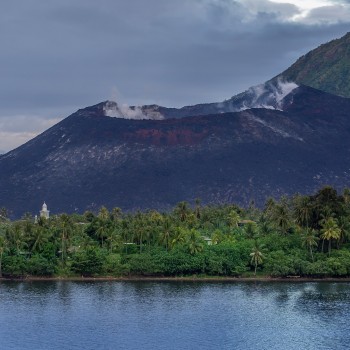
El Valle de Anton
When to visit: December 17 to April 29
El Valle de Anton is a picturesque little Panamanian village in the Cocle Province of Central Panama. Surrounded by an ancient volcanic caldera, local families have been climbing the hills and swimming here for centuries, making it the oldest continually occupied volcanic site on Earth. Due to its isolation from the rest of civilization, it’s a prime example of Old Panama, where life is slower, and the preferred mode of transport is a bicycle.
You won’t find much of western consumerist culture in the village – the most touristy options are an ice cream parlor and a pizza place open only on weekends. Instead, the focus in El Valle de Anton is on nature – and there’s plenty of it. Visit the local orchid conservatory or the amphibian rescue station, home to just some of Panama’s 10,000-strong plants and hundreds of amphibian species. Nearby forests offer excellent bird-watching, and the valleys of El Valle are home to an impressive set of waterfalls as well as some rare golden frogs.
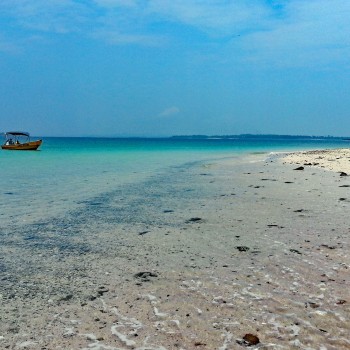
Pearl Islands
Panama’s Pearl Islands are a cluster of islands in the Pacific that featured heavily during three seasons of the reality TV show Survivor. Some of the most beautiful islands in the world are characterized by forested islands and pearl-white sandy beaches. While the majority of the islands’ beauty lies in their isolation, Contadora Island is the most developed and boasts two luxury tourist resorts.
Once home to native Indians until the 16th-century, the Pearl Islands were then taken over by the Spanish, who came in search of pearls, the island’s sought-after namesake. The pearl industry was prominent here, and they were counted, registered, and shipped from Contadora Island (which means ‘Counting Island’). Most of the activity surrounds relaxation: sunbathe on one of the many superb beaches, fish, and whale watching, or explore the old shipwreck that lies rusting away on the far side of Playa Larga, Contadora Island’s most famous beach.
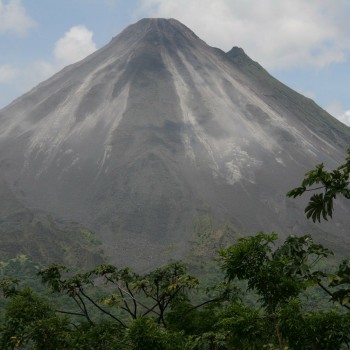
Volcan Baru
Volcan Baru is the highest peak in Panama, offering some of the most amazing views over Costa Rica and the Pacific and Atlantic oceans. Located in the Chiriqui Province of the Pacific West, the mountain is best reached at dawn, when you can witness an enchanting sunrise from the top. There are two ways you can ensure you get the top in time: either you can start the hike around midnight and hike back later in the day, or you can hike up the day before and camp at Fogones campground near the summit.
There are two routes to choose from. The Boquete route is the easiest (yet still very challenging) and takes five to eight hours to ascend and three to five hours to descend. Many people prefer to take the Boquete route up and the Volcan route down, steeper and much more scenic. As you’ll climb a total of 3,474 meters above sea level, make sure you allow enough time to acclimatize, as mild altitude sickness is a risk.
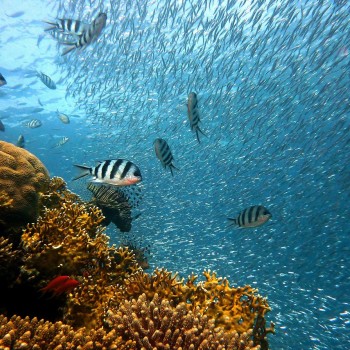
Gulf of Chiriqui
When to visit: January to April and December
The Gulf of Chiriquí stretches along the Pacific coastline between Costa Rica and the Azuero Peninsula. It’s made up of countless scenic marine islands and beaches topped with forests and coco palms, including two national parks – Golfo de Chiriquí National Park and Coiba National Park, the largest island in Panama.
Established in 1994, this marine park protects thousands of coral reefs, some of the wealthiest mangrove forests in Central America, and some glorious coastal meadows. The most touristy offerings can be found on Cala Mia Island Resort, Isla Palenque, and Isla Secas.
Coiba National Park is a popular spot for humpback whale watching between May and November, and Galapagos seals can sometimes be seen on the far-away island of Montuosa. For those who prefer just to hang out and soak up the island life, sunbathing on one of the fantastic beaches is encouraged, while those in search of a little more activity can find it surfing, scuba diving, or sport fishing.
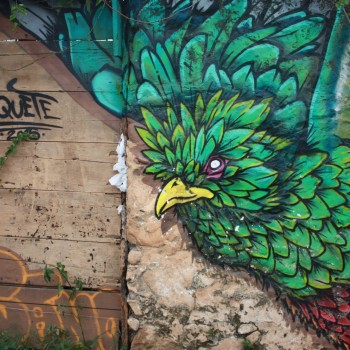
Boquete
When to visit: December 17 to March 25
Located in the Chiriqui province in the Pacific West, Boquete village is a great place to enjoy a little R&R. Enjoy plenty of fresh mountain air while surrounded by a patchwork of beautiful coffee plantations. Home to a surprising number of North American ex-pats, this small-town mountain village has become a destination for health tourism, with several luxury spas and hotels.
Boquete has a focus on the outdoors for those in search of adrenalin, with a pleasant temperature in the low 70s all year round – something that’s given it its nickname ‘The Land of Eternal Springtime.’ It’s also dubbed ‘the Valley of the Flowers’ and offers a lesser-known alternative to Costa Rica’s tourism draws. You can be as adventurous as you dare here. Go zip-lining through the rainforest, white water rafting, hike the Baru volcano, or trek searching for howler monkeys and resplendent quetzal. Or take your time exploring the region’s picturesque coffee plantations sipping on some of the world’s best brews.
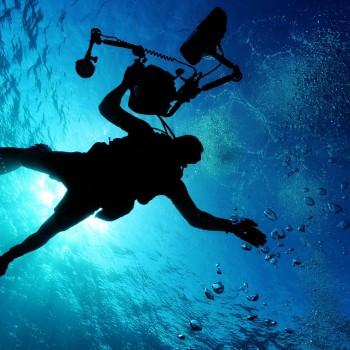
Santa Catalina
When to visit: June to January
It may just be a quiet fishing village of Panama’s Pacific coast, but Santa Catalina is one of the country’s top tourist destinations. It is the village’s remoteness and unspoiled authenticity that appeals to most travelers. Adding to that, Santa Catalina is a popular surfing and diving spot with fantastic beaches and a frequent gateway to the Coiba National Marine Park.
Santa Catalina is small enough that it can be explored entirely by walking. Tourists will not find any significant landmarks, artificial attractions, or shopping malls in this quaint village, but what they will discover are friendly people, a laid-back atmosphere, and sandy beaches offering swimming, snorkeling, diving, and sportfishing. With some of the best and most regular surf breaks in all of Central America, Santa Catalina is also a surfer’s dream. The idyllic landscapes surrounding the village present horseback riding and birdwatching opportunities.
As Santa Catalina can only be reached by a single yet windy paved road from Sona, it’s advised that you travel during daylight hours as cattle can cause sudden dangerous roadblocks.
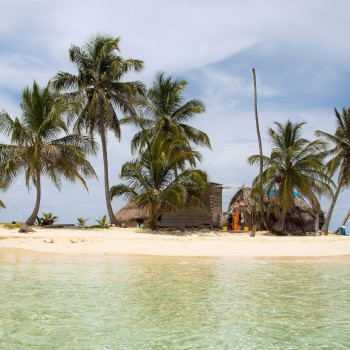
San Blas Islands
When to visit: Between January and May
The San Blas Islands are a collection of islands off the Caribbean coast. They’re self-governed by the indigenous Kuna Yala tribe, who speak Tulekaya – their language. A popular backpacker destination on the route between Colombia and Panama, the islands are slowly becoming more touristy. Yet even today, you can witness everyday life in an indigenous community where electricity isn’t always a given and ATMs are non-existent. Visitors are advised to bring plenty of cash for their visit.
Time spent on the San Blas Islands consists of sunbathing on the pristine, palm-lined beaches and swimming, snorkeling, and diving among hundreds of tropical fish species. Hiking trails amid lush vegetation offer views of colorful birds and calls of howler monkeys. Visiting the Kuna Yala Indians is an excellent way to learn about their language, traditions, music, and distinctive dress. The tribe members often host festivals and dances as well as sell handicrafts, which make good souvenirs.
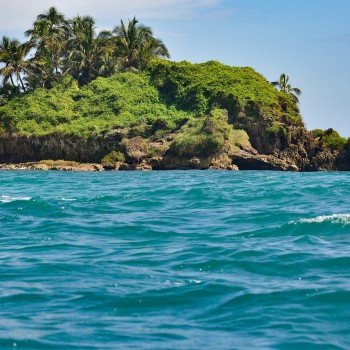
Bocas del Toro
When to visit: January-May / September- October
The Bocas del Toro Archipelago is a cluster of islands, islets, and cays between Almirante Bay and Chiriqui Lagoon. Located in the north-western region of Panama, the island group is part of the district and province of Bocas del Toro and is also home to a significant city of the same name.
Visitors can explore the islands easily via water taxis and private boats, while Isla Colon is also accessible via ferry and plane with an international airport. A magical wonderland of wild jungle, national parks, and biodiverse habitats for many birds and marine turtles.
Like the rest of the Caribbean, gorgeous beaches and beautiful blue waters, diving and snorkeling are popular activities. The province’s capital city, Bocas del Toro, is a melting pot of ethnicities – from Western Caribe to Latinos and extraneros – with plenty of food and traditions aligned with each. Plus, while most islands are focused on chilling out, Bocas Town has a surprisingly good nightlife scene when the sun goes down.
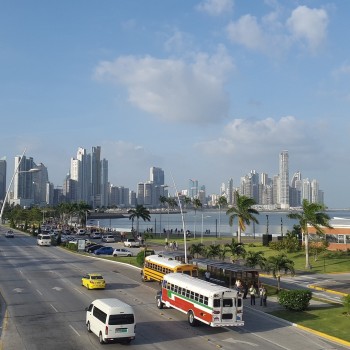
Panama City
When to visit: May through October
Panama’s capital and largest city, Panama City. As the national and provincial capital, it’s also the most modern city in Central America. To give you an idea of its modernity, Panama City is unofficially dubbed ‘the Dubai of Latin America’ You’ll find high-end resorts, shopping malls, and glitzy skyscrapers lining every meter of the city.
Like New York, the preferred method of transport is by taxi. Most city-dwellers won’t walk more than half a mile on foot. If you prefer the flexibility of walking, the cobblestone streets and colonial buildings of the historic quarter, Casco Viejo, are more pedestrian-friendly.
Panama City is known for its excellent views, surrounded by the Panamanian rainforest creeping into the confines of the city.
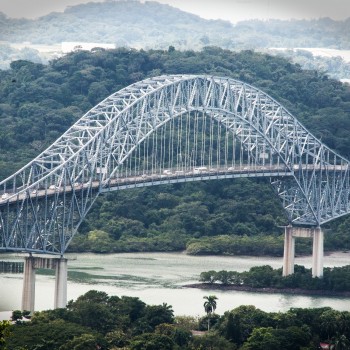
Panama Canal
When to visit: December 17 to April 29
The Panama Canal is one of the most famous landmarks in Panama – and indeed, all of Central America. The French initially constructed it in the late 19th-century; however, the project was deserted in 1893 after thousands of workers fell ill and died from malaria, yellow fever, and other diseases. Running between Panama City on the Pacific and Colon on the Atlantic side, the waterway provides a shortcut between two oceans and one of the world’s most popular shipping zones. The French initially constructed it in the late 19th-century; however, the project was deserted in 1893 after thousands of workers fell ill and died from malaria, yellow fever, and others.
The Panama Canal is one of the most famous landmarks in Panama, indeed, all of Central America. Running between Panama City on the Pacific side and Colon on the Atlantic side, the waterway provides a shortcut between two oceans, and one of the world’s most popular shipping zones.















